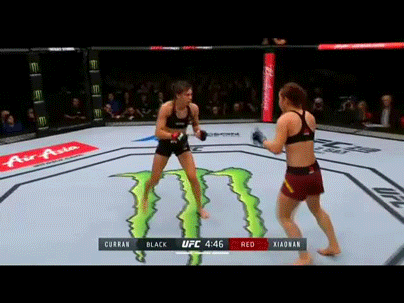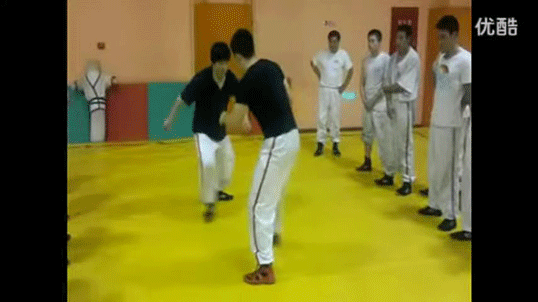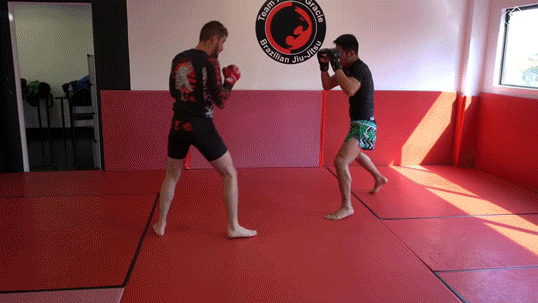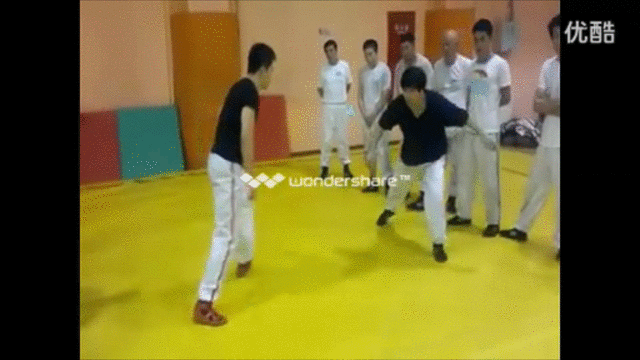Thanks for the explanation. I entirely agree with this post, including whomever you quoted. We're off on a tangent from the original topic (What??? A tangential discussion on MartialTalk?? Never!), but this is why I don't like that some NGA schools don't teach fighting for position, or even good defensive grip fighting (though the latter is pretty explicitly in the classical forms, and the former is foundational to grappling, IMO).I agree with both you and Monkey Turned Wolf, that there may be exceptions to the rule. Apologies if it was taken another way. It was not not meant to be a direct argument, even though I quoted you. It was another example of the action/reaction principle and the possible physics behind it.
“We going to go over movement, body positioning and fighting for position. There’s a third area of judo that never gets discussed that I am aware of. We grip and we attack. But, the one thing the Japanese are really good at is fighting for position. It’s something that a lot of the rest of the world don’t do that often. Because they focus so much on the gripping and the throwing aspect, that they actually forget to battle for position. If you ever trained in Japan for extended periods of time, you will know that your physicality, your strength and your ability to break them down in the first couple minutes is going to go away after a while. Then what you’re going to have to do is, start playing the position game. You’re going to have to learn how to play defense, turn the corner and all that kind of stuff. We’re going to talk about that today just so you guys have a leg up [on the competition].
With Uchi mata, you can take two steps and a full turn [while the opponent stands still]. A great throw, it’s been done in competition. It has been done and it can be done. The problem is it requires one of the things that is not fundamentally sound technique, because it requires speed. You have to be so much faster than your partner in order to accomplish that throw. That’s when you run into trouble. Because if I am slower, it no longer works. You want to make sure the techniques you’re learning today, give you a solid foundation… You don’t want to use your strength and your speed to enter the throw. You want to be able to enter technically and use your speed and strength to throw… This is not next level stuff guys! I’m explaining fundamentals [simple physics]. This is basic stuff.”
Navigation
Install the app
How to install the app on iOS
Follow along with the video below to see how to install our site as a web app on your home screen.
Note: This feature may not be available in some browsers.
More options
Style variation
You are using an out of date browser. It may not display this or other websites correctly.
You should upgrade or use an alternative browser.
You should upgrade or use an alternative browser.
What separates a good one-step from a bad one-step?
- Thread starter skribs
- Start date
My approach is that my opponent is always giving me an opportunity. If I'm able to recognize it and then exploit it, then there is little my opponent can do to stop me from exploiting the opportunity.The problem is if you
1. wait for opportunity, your timing is controlled by your opponent.
2. create opportunity, your timing is controlled by yourself. For example, when to throw a groin kick and force your opponent to drop his arm is controlled by you.
IMO, 1 < 2.
If I only depend on creating opportunities, then I'm limited to the types of opportunities I can create. There is only a limited number of ways you can create your opportunity. If your opponent figures it out, then he will actively take that opportunity away from you.
Even when I take the offensive to attack. I'm always trying to feel out opportunities in his response. Just like your example gif. If your opponent punches at you. Kick under the punch. If the kick lands hard enough, then the second punch will not come. If the kick lands hard enough, then your opponent will break.
I think this clip only works in the context of this sport, absence of striking. I've don't a lot of sweeping in the past and someone punching you makes it a little more complicated than what this shows. The sweep is the easy part. But there's the actually pull off is more complicated than doing just a sweep. This is why I say One-step trains the motion, so that you aren't thinking about the motion that needs to be done in the application. Your brain will be occupied with other things other than the actual sweep.
If you must "manually think about how to move" then the technique will break.
The problem is that for most people who use it.Good one step can be determined by the demonstration of an appropriate understanding of the following, relative to experience and/or grade:
- Timing
- Distance
- Use of range and positioning techniques for intent
- Use of different weapons i.e.: knuckles, mid-knuckles, outer forearm, elbow, heel, etc.
- Application of techniques and acting on expected outcome
Timing - isn't used
Distance - is incorrect.
Positioning - is off because Distance is incorrect.
Application of techniques and acting on expected outcome does not exist in One step.
After your 1st counter, if your opponent reacts, you may not have opportunity to counter him the 2nd time. To assume that your opponent's body will freeze into the thin air so you can counter him the 2nd time, the 3rd time, ... make no sense at all.Application of techniques and acting on expected outcome does not exist in One step.
2 men form training is the opposite of the 1-step training. You make 1 move, your opponent responds with 1 move.
Last edited:
On the previous page, I posted a MMA fight where the foot sweep worked with striking present. Also, I wrote the sequence of skills.I think this clip only works in the context of this sport, absence of striking. I've don't a lot of sweeping in the past and someone punching you makes it a little more complicated than what this shows. The sweep is the easy part. But there's the actually pull off is more complicated than doing just a sweep. This is why I say One-step trains the motion, so that you aren't thinking about the motion that needs to be done in the application. Your brain will be occupied with other things other than the actual sweep.
If you must "manually think about how to move" then the technique will break.
It should be the other way around.I think this clip only works in the context of this sport, absence of striking.
- In wrestling, you pay attention on your balance.
- In sparring, you pay attention on punches that come toward your face. You may not watch your own weight shifting that much.
If it was the one that I saw thenOn the previous page, I posted a MMA fight where the foot sweep worked with striking present. Also, I wrote the sequence of skills.
a.v
White Belt
This is a good example of our street defense that I mentioned previously.
Here is what I mean about distance and position.
I see hesitance to put the power into my senior students - maybe those pads will make it more comfortable for them?
As much as I would like to, we do not work much with knives, however the thinking is similar.
It was applied very differently in that situation, to my eyes.On the previous page, I posted a MMA fight where the foot sweep worked with striking present. Also, I wrote the sequence of skills.
On the previous page, I posted a MMA fight where the foot sweep worked with striking present. Also, I wrote the sequence of skills.
You're right, I agree. I thought JowGaWolf was taking about "a sweep" in general. KFW's sweep was a wrestling demo with a student, took a step, swept with the rear leg and disregarded striking. Machida controlled the space/centerline, used movement, luring, listening, positioning and closer to kosoto gake to attack.It was applied very differently in that situation, to my eyes.
Here is a foot sweep using the rear leg in UFC.

Last edited:
Sweep? Yes. Same sweep that Wang showed in his clip? No. This sweep is initiated by stepping to the Left and sweeping to the left. In the clip that Wang showed, The person steps to the Leff and sweeps to the right. Big difference when it comes to body mechanics.You're right, I agree. I thought JowGaWolf was taking about "a sweep" in general. KFW's sweep was a wrestling demo with a student, took a step, swept with the rear leg and disregarded striking. Machida controlled the space/centerline, used movement, luring, listening, positioning and closer to kosoto gake to attack.
Here is a foot sweep using the rear leg in UFC.

The sweep that this is showing in the clip is not the same. Mechanics are not the same. It makes a big difference. I'm not even sure if the sweep shown by KFW can be done outside of that grappling context. That's just the nature of sweeps. Some work when you are within grappling and others only work when you are withing striking range.
That sweep is called "foot landing sweep". It's used when your opponent steps in. Most of the foot sweep you have to deal with your opponent's leading arm first.I'm not even sure if the sweep shown by KFW can be done outside of that grappling context.
 pinkie pie sad
pinkie pie sadKFW's clip is closed stance right leg forward. The main difference is the "cross" step. I don't understand it's flow in relation to the opponent. It seems slower. Otherwise, both clips sweep into the opponent's weak angle. Another clip where I believe the student is unweighting the front foot to help demo.Sweep? Yes. Same sweep that Wang showed in his clip? No. This sweep is initiated by stepping to the Left and sweeping to the left. In the clip that Wang showed, The person steps to the Leff and sweeps to the right. Big difference when it comes to body mechanics.
The sweep that this is showing in the clip is not the same. Mechanics are not the same. It makes a big difference.
“First give him a fake idea [feint], at this time kick his heel. The tip is look at his foot. When his feet almost touch the ground kick it. If you want to kick him, start from cross [step]. So, I start by right foot go to his left foot. [Then], hook his heel.”

Not quite understanding this part. Above clip starts from long range..I'm not even sure if the sweep shown by KFW can be done outside of that grappling context. That's just the nature of sweeps. Some work when you are within grappling and others only work when you are withing striking range.
SahBumNimRush
Master of Arts
I think it has been covered by a few folks earlier. First we have to define the purpose of step sparring, and I think due to it's origin, there are multiple purposes for step sparring. I do not personally feel that any of those purposes are best trained in traditional step sparring.
It is my understanding that step sparring did not exist in its "traditional" sense in Karate until it's "modernization" in Japan. I have read that it was an attempt to make Karate more palatable to the masses by incorporating something familiar. Kendo and Judo had these step sparring exercises, which made sense in terms of beginning in A). a dueling distance rather than a more realistic "self-defense" distance and B). unbalancing your opponent multiple times prior to the throw.
This combined with a lack of breadth and depth of kata knowledge, it became an exercise of shadow boxing in a non-realistic situation.
A). the distance is wrong. The beginning attacker is often a couple of meters away! Generally, your attacker will be closer.
B). the attack is unrealistic. The likelihood of an attacker stepping with a reverse punch is not high in a self-defense situation.
C). the defense is unrealistic. Your "ready position", again distance, attack from a flawed position, how do you train an effective defensive strategy from a faulty premise?
D). Tendency towards overcompliance of the partner.
All of those detractors to being valid avenues of productive, realistic self-defense training has lead to focuses being placed on other aspects of step sparring. i.e. Timing, movement efficiency, technique, etc... I don't think any of these are bad, but I do feel they are better trained in other areas.
The premise of step sparring as I was traditionally taught echoes GM Weiss' explanation; effective, efficient defenses that deliver the il kyuk; one strike-one "kill". My organization grades step sparring at each rank grading, so I do practice it in class settings in the manner it was taught to me. Efficient movements that allow me to deliver an altercation ending blow quickly.
So now that I've offered both my opinion on step sparring and how it was taught to me. I will offer a bit of how I teach the "choreography" and teaching strategies. I do my best to introduce a hand full of techniques from each of forms at each rank in the step sparring environment, as it helps with teaching the "entry" to the technique without the variables of live sparring. It helps to highlight the optimal positions/postures/steps. We also teach ways of demonstrating the more advanced kicks, although again, I'm not convinced of their merit to self-defense training per se as much as it is performative.
I have linked the one step and self-defense portion of my most recent promotion for video evidence of what I do when performing the activity/exercise.
It is my understanding that step sparring did not exist in its "traditional" sense in Karate until it's "modernization" in Japan. I have read that it was an attempt to make Karate more palatable to the masses by incorporating something familiar. Kendo and Judo had these step sparring exercises, which made sense in terms of beginning in A). a dueling distance rather than a more realistic "self-defense" distance and B). unbalancing your opponent multiple times prior to the throw.
This combined with a lack of breadth and depth of kata knowledge, it became an exercise of shadow boxing in a non-realistic situation.
A). the distance is wrong. The beginning attacker is often a couple of meters away! Generally, your attacker will be closer.
B). the attack is unrealistic. The likelihood of an attacker stepping with a reverse punch is not high in a self-defense situation.
C). the defense is unrealistic. Your "ready position", again distance, attack from a flawed position, how do you train an effective defensive strategy from a faulty premise?
D). Tendency towards overcompliance of the partner.
All of those detractors to being valid avenues of productive, realistic self-defense training has lead to focuses being placed on other aspects of step sparring. i.e. Timing, movement efficiency, technique, etc... I don't think any of these are bad, but I do feel they are better trained in other areas.
The premise of step sparring as I was traditionally taught echoes GM Weiss' explanation; effective, efficient defenses that deliver the il kyuk; one strike-one "kill". My organization grades step sparring at each rank grading, so I do practice it in class settings in the manner it was taught to me. Efficient movements that allow me to deliver an altercation ending blow quickly.
So now that I've offered both my opinion on step sparring and how it was taught to me. I will offer a bit of how I teach the "choreography" and teaching strategies. I do my best to introduce a hand full of techniques from each of forms at each rank in the step sparring environment, as it helps with teaching the "entry" to the technique without the variables of live sparring. It helps to highlight the optimal positions/postures/steps. We also teach ways of demonstrating the more advanced kicks, although again, I'm not convinced of their merit to self-defense training per se as much as it is performative.
I have linked the one step and self-defense portion of my most recent promotion for video evidence of what I do when performing the activity/exercise.
I believe this Outside Leg Leg Sweep is more efficient—shuffle, cover, sweep in one move.That sweep is called "foot landing sweep". It's used when your opponent steps in. Most of the foot sweep you have to deal with your opponent's leading arm first.
pinkie pie sad
When you are fighting the opposite stance, orthodox versus southpaw or vice versa. To perform we are going to push off the lead foot and step perpendicular to our opponent's lead foot and wrap our ankle around our opponent's lead leg calf. We kick out the leg to the right and push the head down towards our left.

Balrog
Master of Arts
We teach one-steps up through Green Belt. They are a good transition tool for beginners moving between static drills and free sparring.I don't want to ask much more than the question on this one, because I want it to be left open-ended. I will specify one thing: I'm referring to the choreography and teaching of the one-step by the instructor, not the performance by the student. What is it that separates a good one-step from a bad one? Alternatively, what makes for a good one-step (tips to follow) or what makes for a bad one-step (things to avoid)?
A fighting strategy/principle is to use the following process of skills:
One common mistake for many people is that they try to use attack too directly. They just want to use their skills to beat their opponents as hard as possible. But in real fighting skill, attacking should never be used alone.
The complete process consists of five steps:
1. Lure: give the opponent false impressions, making him feel like he can get you, and leading him to go where you want him to go,
2. Listen: feel or detect what the opponent wants to do,
3. Control: get the opponent under your control (usually means keep him off-balanced),
4. Dissolve: neutralize the attacking force, and
5. Attack: release a throwing force
In order to be fighting at a high-level the first four steps must be present.
A lot of my grappling training is oriented toward recognizing a weakness in a position, rather than creating one.
The problem is if you
1. wait for opportunity, your timing is controlled by your opponent.
2. create opportunity, your timing is controlled by yourself. For example, when to throw a groin kick and force your opponent to drop his arm is controlled by you.
IMO, 1 < 2.
I will attempt to correct and clarify a few of my posts. The 5 (taiji) fighting skills (including luring) may be used in any order. Neither the 5 skills nor the action/reaction principle directs whether one should recognize a weakness or create one. I should not have related Gerry's phrase to my action/reaction judo example. The judo guy in the clips was demonstrating the action/reaction principle. He did not say don't "recognize or create opportunity" or don't counter throws.My approach is that my opponent is always giving me an opportunity. If I'm able to recognize it and then exploit it, then there is little my opponent can do to stop me from exploiting the opportunity.
If I only depend on creating opportunities, then I'm limited to the types of opportunities I can create. There is only a limited number of ways you can create your opportunity. If your opponent figures it out, then he will actively take that opportunity away from you.
Even when I take the offensive to attack. I'm always trying to feel out opportunities in his response. Just like your example gif. If your opponent punches at you. Kick under the punch. If the kick lands hard enough, then the second punch will not come. If the kick lands hard enough, then your opponent will break.
Replying to KFW's post...
1. waiting for an opportunity: You may be responding to a feint. You may not have enough reaction time to respond. You may get countered.
2. creating an opportunity: It can be a more conservative approach. You can create an opportunity using defense or offense. You may have more control.
One should aim to control the fight from the beginning, whether using defense or offense. One should attack when they have an advantage—when the opponent is double weighted, cannot change. In the street, it's not about scoring points. It's about survival and/or stopping the threat. Martial arts is both an art and science.
Michael Page is a MMA fighter who has a background in Lau Gar kung fu. He talks about creating opportunity and set ups.
Yeah, it’s intentional. It's usually based off something that they're doing, a forward action that they're doing. It’s often I like to create, my coach likes to call it, the “car crash” effect. I get you pulling forward. And then that's when I decide to go in the opposite direction. I want to constantly create a car crash.
So yeah, I need to have an understanding of the person that's in front of me. Everybody likes to respond differently. So for the first minute, minute and a half, depending on how quickly it takes for me to kind of figure somebody out, I call it “attaching strings.” Every time I fake, I might see you twitch. I'm like okay that's for that. And I'll twitch this and I see something else happening. So, I'm attaching strings where I'm doing a lot of faking, a lot of moving. But nothing's happening. But there's a lot going on. It's intentional just for me to understand what your preference is for a specific thing. What are you waiting for? Okay now I know how to bait you. Now, I know how to start pulling and playing with the strings I have now attached. [Now it's the case of which move am I going to assign to this.]
Last edited:

